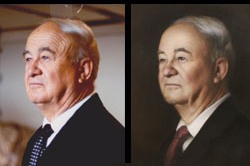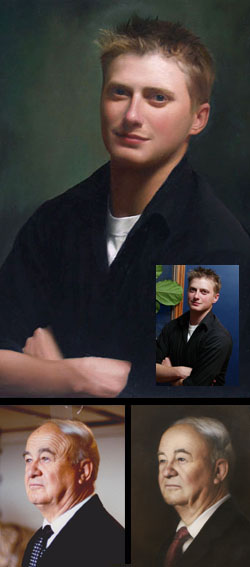 Does the means invalidate the end? Shortly after moving the US I was contacted by someone I knew when I was studying if Florence. When I was in Florence Martinho Correia had been teaching the academic method at one of the ateliers in Florence. He contacted me because he had just converted to Catholicism and was keen to tell me about it. It was good to hear from him, especially with such good news! More recently Martinho told me about a two-week course he was offering, now back in his home town Calgary in Canada called Painting People from Photos. You can see the details here.
Does the means invalidate the end? Shortly after moving the US I was contacted by someone I knew when I was studying if Florence. When I was in Florence Martinho Correia had been teaching the academic method at one of the ateliers in Florence. He contacted me because he had just converted to Catholicism and was keen to tell me about it. It was good to hear from him, especially with such good news! More recently Martinho told me about a two-week course he was offering, now back in his home town Calgary in Canada called Painting People from Photos. You can see the details here.
This raises the question as to whether or not an artist should paint from photographs? Many of those who were trained to paint from nature in ateliers would say categorically, no! to a highly trained artist working from photographs feels like cheating; and there is the sense too that the proper way to represent something is to percieve it directly (even though practically no icon is painted through direct apprehension of the saint).
I always used to think this until I reluctantly had to admit that if I had to make a living as a portrait painter I would probably have to paint from photographs some of the time. The advantage of photographs is that you don't require the sitter to be available as much and so you can produce a cheaper portrait. Also it is one solution to the problem of trying to painting subjects that won't sit still, such as children or animals - although perhaps if I had the skill of Sargent this wouldn't be a problem. I wonder also if part of the reason for my objecting to this comes from an instinctive reaction against modernity and the idea of a machine do what used to done by hand? On reflection, however, the only way to judge this is by the quality of the end result. If the final painting created by copying a photograph is indistinguishable from (or even superior to) that painted directly from a sitter, then all well and good.
There are some who think that the means is important, even if you can't tell the difference in the end. I do not hold to this (provided that the means doesn't lead the artist into sin). There is a similar discussion in regard to icon painting: many tell me that the artist must work from a dark to light (starting with a dark base colour and building the highlights on top) because it mirrors the theological point that the light overcomes the darkness. Aidan Hart firmly lays this to rest in his recently published book. He describes how modern X-ray analysis has shown that many ancient icons weren't painted in this way. Hart himself has put aside the light-from-dark method (along with its accompanying theology) for another on the grounds that he can paint icons of equal quality faster so sell more. This is an important consideration for a working artist.So back to photographs. The question that remains is this: can an artist produce equal results to those produced by observing directly from nature? The lens of a camera processes the image differently from that in the eye (its a bit like the difference between a wide angle lens and magnifying glass) and so a photograph looks different to a painting from nature. The stylistic elements of the baroque are developed so that when the eye sees the two-dimensional painting, the information as presented to and utilised by the mind, is the same as if it were looking at the three-dimensional object. Therefore, it is conceivable that an artist who understands these differences could adapt a photograph so that it contains those painterly qualities.
If we look at Martinho's examples below, he is most definitely not just copying the photograph. The background for example is totally different and has been skillfully applied so that light and dark contrasts vary according to the local tonal value of the subject. He would not know how to do this if were not highly knowledgable about traditional portraiture.
It is concievable that a new form could develop out of this, in which some photographic elements are retained, and some are changed. Even this is not a bad thing necessarily. Photography is a legitimate art form, so why not this hybrid?
All the examples shown are by Martinho.


